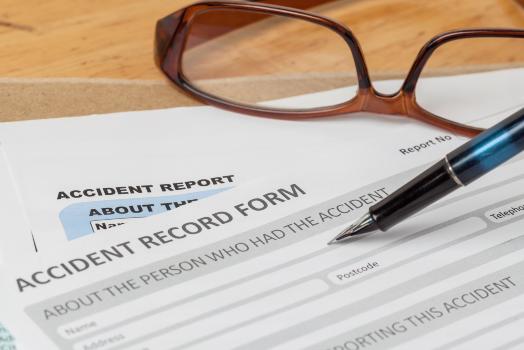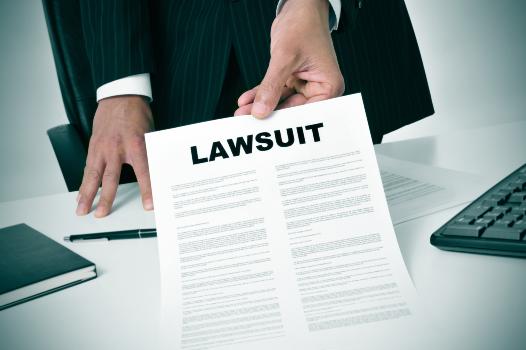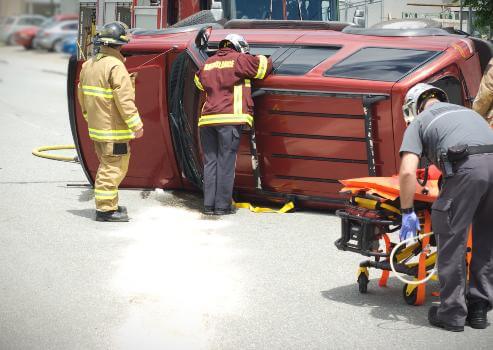Chest Pain from a Car Accident in Ontario, Canada
Recovering From Chest Pain From a Car Accident in Ontario, Canada
There are several different causes of chest injury, all of which can have serious implications for an individual’s health and well-being. The most common types of chest injuries include blunt trauma, motor vehicle accidents, falls, sports-related injuries, violence, and work-related injuries. Blunt force trauma is often caused by physical contact with another object or person that causes damage to the chest wall or organs. Motor vehicle collisions typically involve trauma from the steering wheel or dashboard striking the body resulting in rib fractures or other internal organ damage.
Falls can lead to rib fractures or even lung contusions if the fall is severe enough. Additionally, sports-related activities such as contact sports can lead to chest injuries. In cases of violence, a blunt or sharp object such as a bat, rock, or knife can cause serious chest trauma in addition to other types of injury. Finally, workplace accidents can also cause traumatic chest injuries due to falls from heights or being struck by an object.
Regardless of the cause, it is important that anyone who has suffered a chest injury seek medical attention immediately and consider consulting with an experienced personal injury lawyer. An attorney can help you understand your rights and legal options after suffering any kind of chest injury and will work hard to make certain that you receive the remuneration you deserve for your pain and suffering.
If someone has suffered a chest injury due to another person’s negligence, it is important to take action right away. Discuss with a personal injury attorney to learn more about your options and start the process of seeking compensation for your injuries.
In Summary, chest injuries can have serious implications on an individual’s health and well-being. Blunt force trauma, motor vehicle collisions, falls, violence, sports-related activities, and workplace accidents may all lead to chest injuries. No matter the cause of a chest injury, it is necessary that medical attention be sought immediately, and legal advice should be considered in order to understand one’s rights and obtain any necessary compensation for pain and suffering caused by another party’s negligence or mistake.
- Identifying and Treating Chest Pain From Car Accidents in Ontario?
- Managing Chest Pain from a Seatbelt in a Car Accident in Ontario?
- The Dangers of Chest Trauma from a Car Accident in Ontario?
- How Chest Injuries From an Auto Accidents Can Impact Your Life in Ontario?
- Compensating Pain if Your Chest Hurts from a Car Accident in Ontario?



Chest Pain From a Car Accident in Ontario, Canada
Identifying and Treating Chest Pain From Car Accidents in Ontario, Canada
Chest injuries are a common and potentially serious consequence of car accidents in Ontario. It’s necessary to recognize the signs and symptoms of chest injury, as they can range from minor discomfort to life-threatening conditions. If you get involved in an accident, it is essential that you closely monitor your condition for any changes or new developments.
The most common types of chest injuries include bruising or contusions, rib fractures, pneumothorax (collapsed lung) & pericardial effusion (fluid accumulation around the heart). These types of injuries can occur due to blunt force trauma directly to the chest region, such as from seatbelt use during a car accident. Symptoms may include pain when taking a deep breath, tenderness and swelling around the chest area, and difficulty breathing.
It’s necessary to contact a medical professional if you suspect or experience any of these symptoms following a motor vehicle accident. After receiving an initial diagnosis from your doctor, it may be necessary to seek further legal guidance in order to secure the compensation you require for medical expenses and other costs related to the accident. A qualified personal injury attorney can assist you with this process.



Chest Pain from Seatbelt In a car Accident in Ontario, Canada
Managing Chest Pain from a Seatbelt in a Car Accident in Ontario, Canada
Car accidents are a leading cause of chest injuries in Ontario. When a person is involved in an automobile accident, the seatbelt can be responsible for substantial trauma to the chest area and surrounding tissues. Common symptoms of trauma caused by seatbelts include pain, bruising, and tenderness where the belt was secured around the body. If these symptoms persist or worsen with time, seek medical attention immediately.
Chest pain can be an indication of an injury to the chest area, even when you haven’t hit anything. Seatbelt injuries are often overlooked because they tend to only cause minor bruising or discomfort and aren’t as visible as other types of car accident injuries. The most common type of seatbelt injury is a contusion or bruise on your chest from the belt restraint. This can lead to soreness, swelling and sometimes even infection if it’s not treated properly. Other potential issues include fractured ribs, muscular strain, dislocated sternum or collarbone, internal bleeding, bruised lungs, pneumothorax (collapsed lung), broken bones in the rib cage and more severe trauma such as organ damage or traumatic brain injury.
If you have sustained an injury to your chest, even if it is only minor discomfort or bruising, it’s important to seek medical attention as soon as possible. Proper treatment can help reduce the risks of any long-term damage and decrease recovery time. In some cases, emergency care may be necessary. It’s also recommended to contact a lawyer specializing in car accident injuries for more information on your rights and the legalities surrounding your specific case.



Chest Trauma From a Car Accident in Ontario, Canada
The Dangers of Chest Trauma from a Car Accident in Ontario, Canada
Chest injuries caused by car accidents can range from minor to severe. They could include anything from bruises and scrapes to broken ribs, punctured lungs and internal bleeding. In the worst cases, chest trauma can even result in spinal cord damage or traumatic brain injury. Victims of such traumatic injuries will likely require long-term medical treatment and rehabilitation, which can be costly.
It is important for those involved in a car accident to take note of any possible chest pain that may have been sustained following the collision as soon as possible. This pain should not be taken lightly, as it could point to underlying health issues that need attention right away. It is especially important if you were wearing a seatbelt when the accident occurred, as chest pain could be an indication of significant trauma caused by the seatbelt.
Chest injuries resulting from car accidents are a leading cause of disability and death in Ontario. The intensity of chest trauma that can be inflicted by an auto accident is dependent upon the speed, size, and weight of the vehicles involved, as well as other factors, such as whether the occupant was wearing a seatbelt or airbag at the time of impact. Common types of chest injuries sustained during car collisions include broken ribs; bruising caused by the restraining forces of a seatbelt; fractured sternum; punctured lungs and heart damage.
Additionally, there is also potential for long-term breathing problems due to scarring on lung tissue, which can lead to respiratory issues for years after the incident. Since these symptoms may not become apparent until much later, it is important to visit your doctor any time you experience chest pain or trouble breathing.



Chest Injuries From an Auto Accidents in Ontario, Canada
How Chest Injuries From an Auto Accidents Can Impact Your Life in Ontario, Canada
Car accidents can cause chest injuries such as broken bones in the ribcage, bruising and internal organ damage. These can have serious consequences for both the physical and mental health of the affected person. In some cases, chest trauma from a car accident may even lead to disability or death.
It is important to recognize symptoms associated with a chest injury, seek medical attention immediately if these are present, and contact a lawyer for further advice about filing a claim for compensation due to negligence or poor safety practices resulting in an auto accident in Ontario.
Chest injuries are a leading cause of disability and death in Ontario, so it is important to be aware of the potential causes and effects of chest trauma. Chest pain injury can range from minor soreness to serious internal damage, depending on the severity of the accident.
The most common injuries are broken ribs or sternum, along with bruises or abrasions to the chest wall. Other possible chest injuries include punctured organs such as lung contusions, fractures, herniated discs, tissue tears, or even traumatic brain injury (TBI).



Chest Hurts From a Car Accident in Ontario, Canada
Compensating Pain if Your Chest Hurts from a Car Accident in Ontario, Canada
Car accidents are a leading cause of chest pain and injury in Ontario, often resulting from the force of impact or the sudden jerk caused by wearing a seatbelt. Common chest injuries range from bruises to severe trauma and may require medical attention. It is necessary to recognize the symptoms and seek help immediately after an accident, as there can be life-threatening complications if left untreated.
Some common signs and symptoms of chest injury create sharp or dull pain in the chest area, shortness of breath, swelling and bruising, nausea, dizziness, headache, and tingling sensation in the arms/legs. If you can notice any of these symptoms, ask help from your doctor immediately for a proper diagnosis. Chest X-rays, CT scans and other imaging techniques may be used to determine the seriousness of the injury.
The best way to prevent chest injuries from a car accident is to practice safe driving habits, such as wearing a seatbelt while travelling in a vehicle and always following traffic laws. Regular exercise and stretching can also help keep your chest muscles strong and reduce the risk of injury.
If you have suffered from a chest injury because of a car accident in Ontario, it is important to seek help quickly. Consult with an experienced lawyer for more information regarding your rights and legal options. They can assist you through the complex process of seeking compensation on behalf of your injury. With the right legal aid, you may be able to receive financial coverage for medical bills or other related expenses while also getting justice for the suffering caused by someone else’s negligence.
*The laws pertaining to automotive injuries are complex and are contsantly evolving. The information on this website was not written by legal professionals and should not be considered legal advise. Please contact a professional personal injury lawyer serving Ontario for the most up to date and accurate information.






